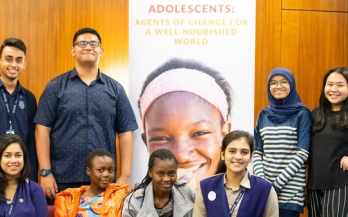- 01/01/2016
This is a report of a stakeholder survey that was conducted to seek views on a proposed ten year plan to combat vitamin and mineral deficiencies. Interviews were conducted early in 2006 with 155 stakeholders from developing and developed countries, intergovernmental organisations, business and industry, nongovernmental organisations, university researchers, donors and financial institutions.
- 01/10/2016
This report commissioned by the European Commission provides a global mapping of food fortification that is intended to serve as reference documentation. The aim of the mapping is to advance understanding on the main features of food fortification including key strategic concerns, operational challenges, compliance issues, coverage, consumption trends, as well as impact on the reduction of micronutrient deficiencies.
Around 1.2 billion people, or 1 in 6 of the world’s population, are adolescents aged 10 to 19. Adolescent nutrition is frequently considered to be the second most important period of physical growth in the life cycle, after the first year following child birth.
The world is rapidly urbanising. By 2050, two thirds of the world population will live in urban areas. This has major consequences for peoples’ diets. Cities now face the double burden of malnutrition: micronutrient deficiencies and overnutrition (overweight and obesity).
On 11 July 2017, Lawrence Haddad, GAIN’s Executive Director, attended the UK Nutrition Society meetings in London. His presentation focused on challenges and opportunities for urban nutrition in low and middle income countries.




